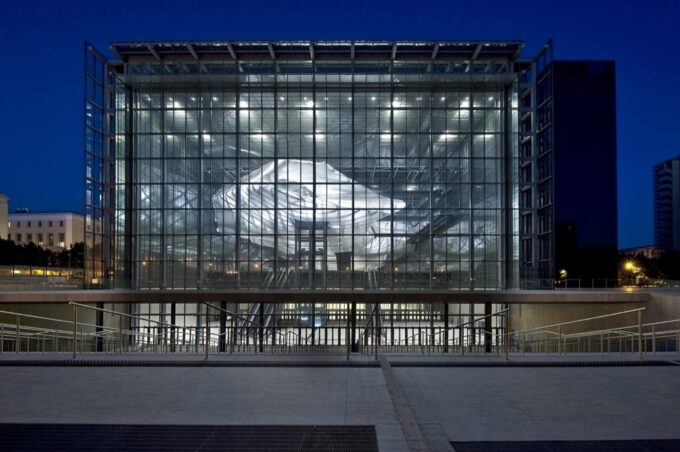- Home
- Articles
- Architectural Portfolio
- Architectral Presentation
- Inspirational Stories
- Architecture News
- Visualization
- BIM Industry
- Facade Design
- Parametric Design
- Career
- Landscape Architecture
- Construction
- Artificial Intelligence
- Sketching
- Design Softwares
- Diagrams
- Writing
- Architectural Tips
- Sustainability
- Courses
- Concept
- Technology
- History & Heritage
- Future of Architecture
- Guides & How-To
- Art & Culture
- Projects
- Interior Design
- Competitions
- Jobs
- Store
- Tools
- More
- Home
- Articles
- Architectural Portfolio
- Architectral Presentation
- Inspirational Stories
- Architecture News
- Visualization
- BIM Industry
- Facade Design
- Parametric Design
- Career
- Landscape Architecture
- Construction
- Artificial Intelligence
- Sketching
- Design Softwares
- Diagrams
- Writing
- Architectural Tips
- Sustainability
- Courses
- Concept
- Technology
- History & Heritage
- Future of Architecture
- Guides & How-To
- Art & Culture
- Projects
- Interior Design
- Competitions
- Jobs
- Store
- Tools
- More
Future Trends in Urban Development: Embracing Sustainability and Smart Technology
Explore the future of urban development in this insightful article that highlights transformative trends shaping smarter, greener cities. Discover how smart technologies, green architecture, and inclusive community planning are paving the way for sustainable living. From climate resilience to mixed-use developments, learn how innovations promote vibrant communities and enhance urban living.

As cities evolve, urban development is transforming at an unprecedented pace. We’re witnessing a shift towards smarter, more sustainable living spaces that prioritize not just functionality but also the well-being of residents. With rapid technological advancements and a growing emphasis on environmental responsibility, the future of urban landscapes promises to be innovative and resilient.
In this exploration of future trends in urban development, we’ll delve into key movements shaping our cities. From smart technologies and green architecture to inclusive community planning, these trends are set to redefine how we experience urban living. Join us as we uncover what lies ahead for our urban environments and how these changes can create better, more vibrant communities for everyone.

Table of Contents
ToggleFuture Trends in Urban Development
Urban development trends are increasingly emphasizing sustainability, technology integration, and community engagement. Here are key areas shaping the future of our cities:

1. Smart Technologies
- Smart infrastructure includes connected devices that enhance city services.
- Real-time data is used for traffic management, waste disposal, and energy usage.
- Automation improves public safety through smart surveillance and lighting.
2. Green Architecture
- Eco-friendly buildings reduce energy consumption with sustainable materials.
- Green roofs and walls promote biodiversity and improve air quality.
- Solar panels and rainwater harvesting systems support energy efficiency.
3. Transit-Oriented Development
- Mixed-use developments encourage walking and cycling to reduce reliance on cars.
- Proximity to public transport hubs facilitates easier commutes for residents.
- Integrated transport solutions improve accessibility and connectivity.
4. Inclusive Community Planning
- Community engagement ensures that diverse voices shape urban spaces.
- Affordable housing initiatives promote socioeconomic diversity.
- Public spaces, such as parks and community centers, enhance social interaction.
5. Climate Resilience
- Urban designs incorporate strategies to adapt to climate change impacts.
- Flood-resistant structures and green infrastructure mitigate environmental risks.
- Urban heat island effects are addressed through increased vegetation.
6. Remote Work Adaptation
- Flexible spaces are being designed to accommodate remote and hybrid work environments.
- Co-working spaces foster collaboration and innovation within neighborhoods.
- Tech infrastructure supports work-from-home capabilities, enhancing connectivity.
7. Mixed-Use Developments
- Mixed-use buildings combine residential, commercial, and recreational facilities.
- These developments create vibrant, multifunctional urban areas.
- Greater walkability is promoted, improving overall quality of life.
8. Regenerative Design
- Regenerative approaches focus on positively impacting the environment.
- Urban projects aim to restore natural ecosystems and biodiversity.
- Circular economy principles minimize waste and promote resource efficiency.
As urban development continues to evolve, we see a strong commitment to creating smarter, greener, and more inclusive cities. These trends highlight our collective responsibility towards sustainable living and urban resilience.
Sustainable Urban Design
Sustainable urban design emphasizes environmentally responsible practices while enhancing the quality of urban life. We focus on key components that contribute to this approach, including green infrastructure and energy efficiency innovations.

Green Infrastructure
Green infrastructure incorporates natural processes and elements to manage stormwater, enhance air quality, and provide habitat. Examples include green roofs, permeable pavements, and urban forests. These systems not only mitigate flooding but also improve biodiversity and reduce urban heat islands. Cities like Singapore demonstrate successful integration of green spaces through vertical gardens and extensive park systems, encouraging residents to connect with nature.
Energy Efficiency Innovations
Energy efficiency innovations reduce overall consumption while enhancing building performance. Smart building technologies, such as advanced HVAC systems and energy-efficient lighting, play a crucial role in lowering energy usage. For example, utilizing sensors and automation can optimize energy use based on occupancy. Moreover, the incorporation of renewable energy sources, like solar panels and wind turbines, further supports energy independence and sustainability in urban areas. Integrating these innovations ensures that urban environments align with climate goals and promote long-term resilience.
Smart City Technologies
Smart city technologies play a vital role in enhancing urban living by leveraging advancements in connectivity and data analytics, enabling cities to operate more efficiently and sustainably. Key components include the Internet of Things (IoT) and data-driven urban planning.

Internet of Things (IoT) Applications
IoT applications in urban environments connect everyday devices to the internet, enhancing services and operations. Common examples include:
- Smart Lighting: Automated streetlights adjust brightness based on pedestrian and vehicular activity, reducing energy usage and enhancing public safety.
- Waste Management Systems: Sensors in waste bins monitor fill levels, optimizing collection routes and reducing costs.
- Smart Traffic Management: Connected traffic signals adapt in real-time to traffic patterns, minimizing congestion and improving travel efficiency.
- Environmental Monitoring: Sensors track air quality and noise levels, enabling cities to address pollution sources proactively.
- Public Transportation: Real-time data informs users about schedule changes and vehicle locations, improving accessibility and reducing waiting times.
By integrating IoT applications, cities enhance responsiveness, sustainability, and residents’ quality of life.
Data-Driven Urban Planning
Data-driven urban planning utilizes analytics to inform decision-making and infrastructure development. Key aspects include:
- Predictive Modeling: Data analysis predicts urban growth patterns, aiding in resource allocation and infrastructure investment.
- Citizen Engagement: Platforms for community feedback collect data on residents’ preferences, ensuring developments align with public needs.
- Infrastructure Optimization: Real-time data improves maintenance schedules and resource use across city services, reducing operational costs.
- Sustainability Assessments: Analyzing environmental data allows for the identification of areas needing green initiatives, enhancing urban resilience.
Data-driven approaches in urban planning foster smarter, more adaptive cities that meet the dynamic needs of their inhabitants.
Transportation Evolution
Transportation in urban areas is undergoing a significant transformation. Innovations in mobility are set to redefine how we navigate cities, contributing to sustainability and efficiency.

Autonomous Vehicles
Autonomous vehicles (AVs) promise to revolutionize urban transportation. Their integration into our cities enhances traffic flow and reduces accidents, significantly cutting down on vehicular fatalities. AV technology utilizes sensors and machine learning algorithms to navigate with minimal human input, leading to a seamless driving experience. For instance, cities implementing AVs can expect reductions in parking demand, as these vehicles can drop off passengers and park themselves, optimizing space usage. Local governments can also benefit from decreased traffic congestion, resulting in improved air quality and reduced carbon emissions, aligning with our sustainability goals.
Public Transit Innovations
Public transit innovations enhance connectivity and improve the overall travel experience. Using smart technologies, transit systems can offer real-time tracking and streamlined routes, reducing wait times and encouraging more residents to utilize these services. Cities adopting electric buses contribute to lower emissions while improving air quality. Also, implementing bike-sharing systems and pedestrian-friendly designs encourages active transportation, promoting healthy lifestyles. A commitment to integrated transit systems boosts overall accessibility, ensuring that people can navigate urban spaces efficiently and sustainably. By prioritizing these innovations, we pave the way for more inclusive and effective transportation solutions in our cities.
Community Engagement and Inclusion
Community engagement plays a crucial role in the future of urban development. Inclusive practices ensure diverse voices contribute to creating vibrant, accommodating spaces. By prioritizing participation, cities can enhance social cohesion and address the varied needs of their residents.

Participatory Urban Planning
Participatory urban planning emphasizes involving community members in the decision-making process. This approach encourages collaboration between local governments, residents, and stakeholders. Techniques like workshops, surveys, and interactive platforms facilitate dialogue and empower citizens.
Effective participatory planning leads to projects that reflect the community’s desires. Examples include neighborhood revitalization initiatives where residents shape designs for parks and public spaces. As a result, cities can address specific needs while fostering a sense of ownership and pride among residents.
Social Equity in Development
Social equity in development focuses on fair access to resources and opportunities for all community members. This approach recognizes historical injustices and seeks to address disparities in housing, transportation, and public services. By embracing social equity in urban development projects, cities create inclusive spaces that support diverse populations.
Strategies for promoting social equity include affordable housing initiatives, accessible public transit options, and equitable zoning policies. We can observe successful implementations in cities like Portland, Oregon, which prioritizes affordable housing near transit hubs. Communities thrive when everyone has equitable access to vital services and opportunities.
Conclusion
The trends in urban development showcase a clear trajectory towards fostering smarter, greener, and more inclusive cities. As we explore the key areas shaping our urban future, we identify the following pivotal components:
- Smart Technologies enhance urban governance through real-time data integration, improving public safety and traffic management efforts.
- Green Architecture establishes eco-friendly structures that not only conserve energy but also reinforce biodiversity within urban landscapes.
- Transit-Oriented Development prioritizes accessibility by creating mixed-use environments that promote walking and cycling near public transport hubs.
- Inclusive Community Planning emphasizes the importance of diverse perspectives, ensuring all community members have a voice in creating equitable urban spaces.
- Climate Resilience strategies adapt our cities to withstand climate-related challenges by implementing flood-resistant designs and increasing green spaces.
- Remote Work Adaptation incorporates flexible workspaces equipped with the necessary technology to support varying work arrangements.
- Mixed-Use Developments blend residential, commercial, and public areas, fostering lively neighborhoods that cater to all aspects of urban life.
- Regenerative Design focuses on repairing ecosystems while promoting efficient use of resources across urban settings.
We also recognize the significance of sustainable urban design, which champions environmentally friendly practices that enhance living conditions. The integration of Green Infrastructure is crucial, using natural solutions to manage stormwater and ensure air quality, with examples seen in innovative cities like Singapore. Similarly, Energy Efficiency Innovations leverage smart technologies and renewable resources to decrease energy consumption in urban environments.
Moreover, the role of Smart City Technologies cannot be overstated. The Internet of Things (IoT) and analytical data are transforming urban experiences, with applications such as smart waste management and environmental monitoring ensuring efficient city operations. Data-driven planning enriches urban assessments, utilizing analytics to shape resilient and adaptable infrastructure.
The Transportation Evolution within urban areas encapsulates a shift towards sustainability and efficiency through innovations like Autonomous Vehicles (AVs) and improved public transit systems. We see the potential for AVs to optimize space, enhance safety, and streamline traffic flow while public transit innovations such as real-time tracking offer inclusive travel solutions.
Lastly, we value Community Engagement and Inclusion as vital components in urban development. Engaging community members in participatory urban planning processes fosters a sense of ownership and pride, reflecting shared desires within our neighborhoods. Strategies promoting Social Equity in Development ensure fair access to resources and opportunities, making strides toward more inclusive urban spaces.
The ongoing evolution of urban development shows a commitment to smarter, greener, and more inclusive cities, highlighting our joint responsibility toward creating sustainable and resilient urban landscapes.
- climate-resilient cities
- connected communities
- digital cities
- eco-friendly development
- energy-efficient cities
- Future Cities
- future urban living
- green infrastructure
- IoT in urban planning
- resilient urban design
- smart city technology
- smart infrastructure
- smart mobility
- smart urban design
- sustainable architecture
- sustainable urban planning
- technology in cities
- urban development trends
- urban innovation
- urban sustainability
Submit your architectural projects
Follow these steps for submission your project. Submission FormLatest Posts
Enhancing Urban Life: Best Practices for the Design of Walkways in Urban Areas
Discover the transformative role of urban walkway design in creating safer, sustainable,...
Playgrounds: Landscape Architecture for Inviting Interaction
Playgrounds in landscape architecture are more than spaces for activity—they are environments...
Understanding Having an Architectural Perception in Public Spaces for Better Community Engagement
Explore the transformative power of architectural perception in public spaces. This article...
Top Sustainable Design Practices for Mixed-Use Public Spaces: Creating Vibrant Communities
Discover how sustainable design practices can transform mixed-use public spaces into vibrant,...












Leave a comment